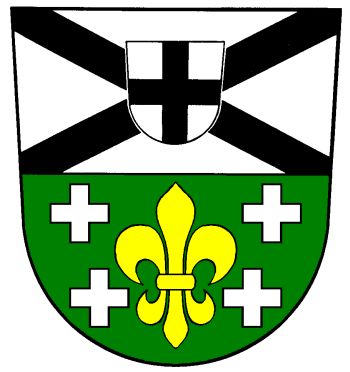Wahlschied: Difference between revisions
Jump to navigation
Jump to search
Knorrepoes (talk | contribs) No edit summary |
Knorrepoes (talk | contribs) m (Text replace - "[[Literature" to "{{media}} [[Literature") |
||
| Line 20: | Line 20: | ||
The arms show elements of the arms of the former rulers and owners of the village and church; until the 14th century the village was ruled by the Lords von Dagstuhl (black cross), followed by the teutonic Order (small shield), the Wadgassen Abbey (fleur-de-lis) and finally the counts of Nassau-Saarbrücken (crosses). The green colour is a canting element (Wahl from Wald=forest). | The arms show elements of the arms of the former rulers and owners of the village and church; until the 14th century the village was ruled by the Lords von Dagstuhl (black cross), followed by the teutonic Order (small shield), the Wadgassen Abbey (fleur-de-lis) and finally the counts of Nassau-Saarbrücken (crosses). The green colour is a canting element (Wahl from Wald=forest). | ||
{{media}} | |||
[[Literature]] : Heyen und Zimmer, 1966 | [[Literature]] : Heyen und Zimmer, 1966 | ||
Revision as of 08:45, 9 July 2014
| Heraldry of the World Civic heraldry of Germany - Deutsche Wappen (Gemeindewappen/Kreiswappen) |
WAHLSCHIED
State : Saarland
District (Kreis) : Saarbrücken
Incorporated into: 1974 Heusweiler
Official blazon
Origin/meaning
The arms were officially granted on May 11, 1967.
The arms show elements of the arms of the former rulers and owners of the village and church; until the 14th century the village was ruled by the Lords von Dagstuhl (black cross), followed by the teutonic Order (small shield), the Wadgassen Abbey (fleur-de-lis) and finally the counts of Nassau-Saarbrücken (crosses). The green colour is a canting element (Wahl from Wald=forest).
Contact and Support
Partners:
Your logo here ?
Contact us
© since 1995, Heraldry of the World, Ralf Hartemink 
Index of the site
Literature : Heyen und Zimmer, 1966











